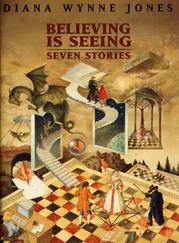2. Leibniz’s interpreters made use of the vocabulary at their disposal to translate his terminology into words such as ‘mind’, ‘soul’, ‘cognition’, ‘endeavour’, etc. This, however, was before the era of information theory, Turing machines and digital computers, which have supplied us with a new set of concepts, a lexicon, and a rigorous science pertaining to things that, like monads, perform a sort of cogitation but are neither divine nor human. A translator of Leibniz’s work, beginning in AD 2010 from a blank sheet of paper, would, I submit, be more likely to use words like ‘computer’ and ‘computation’ than ‘soul’ and ‘cognition’. During Leibniz’s era, the only person who had thought seriously about such machines was Leibniz himself; building on earlier work by Blaise Pascal, he designed, and caused to be built, a mechanical computer, and envisioned coupling it to a formal logical system called the Characteristica Universalis. He invented binary arithmetic, and, according to no less an authority than Norbert Wiener, pioneered the idea of feedback.
3. In particular, the monads’ production rule scheme clearly presages the modern concept of cellular automata. Quoting from Mercer’s work:
The Production Rule of F is a rule for the continuous production of the discrete states of F so that it instructs F about exactly what to think at every moment of F’s existence. Following Leibniz’s suggestion, if F exists from t1 to t nand has a different thought at each moment of its existence, then at every moment, there will be an instruction about what to think next. The present thought occurring at t1, together with the Production Rule, will determine what F will think at t 2.
Combined with the monadic property of being able to perceive the states of all other monads, this comes close to being a mathematically formal definition of cellular automata, a branch of mathematics generally agreed to have been invented by Stanislaw Ulam and John von Neumann during the 1940s as an outgrowth of work at Los Alamos. The impressive capabilities of such systems have, in subsequent decades, drawn the attention of many luminaries from the worlds of mathematics and physics, some of whom have proposed that the physical universe might, in fact, consist of cellular automata carrying out a calculation – a hypothesis known as Digital Physics, or It from Bit.
4. Leibniz insisted that each monad perceived the states of all of the others, a premise that runs counter to intuition, given that this would seem to require that an infinite amount of information be transmitted to and stored in each monad. Of all the claims of Monadology, this must have seemed the easiest to refute a hundred years ago. Since then, however, it has been given a new lease on life by quantum mechanics. Consider, for example, the Pauli exclusion principle, which states (for example) that in a helium atom with two electrons in the same orbital, the two must have opposite spins. It is not possible for both of them to possess exactly the same state. Each of the two electrons somehow ‘knows’ the direction of the other’s spin and ‘obeys’ the rule that its spin must be different. The Pauli exclusion principle is Leibniz’s identity of indiscernibles principle translated directly into physics. Moreover, the ability of an electron to ‘know’ the state of another electron, without any physical explanation as to how this information is transmitted and stored, is strongly reminiscent of Monadology. Elementary descriptions of quantum mechanics tend to limit themselves to extremely simple systems, such as individual particles or atoms, since beyond there the mathematics becomes intractable. But the same principles apply, albeit in vastly more complex form, in larger systems: the quantum state of each particle is dependent upon the states of all the other particles in the system.
5. Leibniz’s notion that the ultimate entities in the universe were nonspatiotemporal received a kind of weak boost from general relativity, which called into question the idea of absolute space and time as a fixed lattice on which the laws of physics were enacted. More recently, absolute space and time have come under more concerted attack as some physicists have sought to develop so-called background-independent theories. The idea of background independence is explained in more detail in Lee Smolin’s The Trouble with Physics, and the history of the concept of absolute space and time, from the Babylonians forwards, is told by Julian Barbour in his magisterial The Discovery of Dynamics. That space and time have an absolute reality, and that the laws of physics must be hung on a fixed spatiotemporal lattice, are metaphysical assumptions. Very reasonable, empirically grounded assumptions to be sure, but assumptions nonetheless. Resulting theories are called background-dependent. Various efforts have been made to derive background-independent theories that make no assumptions as to the fundamental reality of space and time. Barbour in particular has done seminal work along these lines, showing that general relativity is a realisation of a relational, i.e. Leibnizian, view of space and time. More recently, other researchers, notably Smolin, have sought to unify Barbour’s formulation of general relativity with quantum mechanics, the aim being to develop a background-independent theory of quantum gravity according to which space and time are emergent properties resulting from interactions of more fundamental entities joined together in a graph of connections. This theory, which is called loop quantum gravity, is proposed as an alternative to string theory, which is background-dependent.
6. The Leibnizian concept of pre-established harmony was viciously mocked by Voltaire in Candide, and has become no easier for sophisticated people to accept since then. Stripped of its theological overtones and saccharine connotations, though, the concept has a reasonably clear analogue in modern physics.
a) Newtonian mechanics exactly describes the behaviour of individual bodies (provided, as Einstein later discovered, that they are reasonably large and slow-moving). Its laws are expressed in terms of individual particles: a particle moves in a straight line unless acted upon by a force. The force acting on a particle is equal to the product of its mass and acceleration (F = ma). As any first-year physics student learns the hard way, naïvely using the F = ma approach to describe systems comprising many independent parts soon becomes mathematically intractable.
b) Leibniz is credited with having written down the law now known as conservation of energy (which he denoted vis viva). In any system of particles, the product of the mass and the square of the velocity of each particle, summed over all of the particles in the system, remains constant. When this, and the law of conservation of momentum, are imposed as constraints on a system, the mathematics frequently gets easier, to the point where it becomes possible to produce results not obtainable otherwise. Conservation of energy does not contradict Newton’s laws, and, in fact, is derivable from them, and so from a strictly mathematical point of view it adds nothing to Newtonian physics. It does, however, introduce a different way of thinking about physical systems. The naïve reductionist strategy of the first-year physics student gives way to a global approach in which the system as a whole must obey certain rules, to which the detailed movements and interactions of its components are seen as subordinate.
c) The physicists of the late eighteenth and early nineteenth century developed new tools based on the notion of state or configuration spaces framed not of spatial dimensions but of all the generalised coordinates and momenta needed to specify the state of the system. Any possible state can be represented as a point in that space, and its evolution over time as a trajectory. The behaviour of such trajectories is governed by an ‘action principle’ that encodes all of the applicable physical laws, such as conservation of momentum and of energy. Action principles in classical state space are a mathematical reformulation of Newton’s laws, not an alternative to them. The change in point of view from physical trajectories in Cartesian space to action in state space is nonetheless significant. It is a further step away from the reductionist and toward the global approach. It seems to inject a teleological aspect that is not present in the older formulation, and so has occasioned some introspection among philosophically inclined scientists. In his Lectures on Physics, Richard Feynman interpolated a single, anomalous chapter on the topic, simply because of his abiding fascination with it. It allows the physicist to predict the behaviour of a complex system without having to work out the detailed interactions among its physical atoms. It leads to important results from thermodynamics and it is directly applicable to quantum mechanics. It is a way of thinking, systematically and rigorously, about compossibility, a concept important to Leibniz. Many possible states of affairs might exist or, to put it another way, there are an infinite number of possible worlds. But not all states of affairs are compossible; some are mutually contradictory, and while it is possible to imagine a universe in which contradictory states of affairs coexist, it is not possible for such a universe to come into practical be ing. The configuration space that describes the universe contains an infinity of points, each of which represents a different state of affairs, but most of these are incoherent. Only certain points – certain universes – make sense internally, and those points lie on trajectories that describe the logical evolution, according to physical law, of those universes over time. If one adopts this frame of reference for considering Leibniz’s concept of the pre-established harmony, and excludes (or at least adopts an agnostic stance toward) the notion that it was all set up at the beginning by God, it is easier to come to grips with Leibniz’s idea that the monads act in a coherent way somehow transcending detailed cause-and-effect interactions.
Читать дальше












